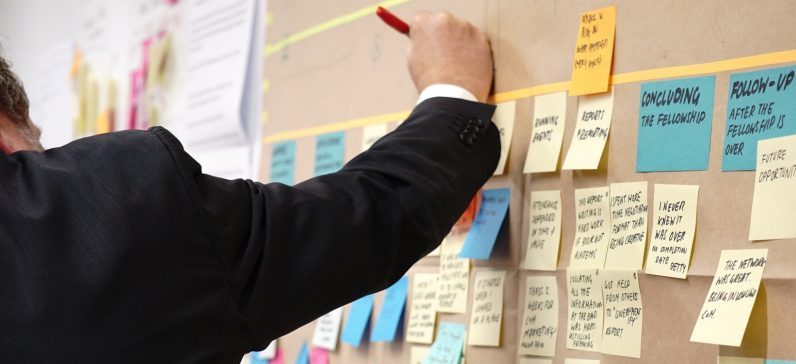 The continuous improvement framework is a comprehensive and systematic approach to the production or delivery of products or services that reduces waste and inconsistencies while increasing value to customers.
The continuous improvement framework is a comprehensive and systematic approach to the production or delivery of products or services that reduces waste and inconsistencies while increasing value to customers.
An authentic continuous improvement initiative never ends. Nonetheless, this approach can produce increased value and return on investment year after year.
Public leaders can effectively implement the continuous improvement framework by focusing on three goals:
- Align—Achieving constancy of purpose and organizational attention.
- Enable—Focusing on the process, and embracing scientific thinking, flow and pull value to assure quality at the source and to seek continuous improvement. Having an effective problem-solving system to enable continuous improvement is essential
- Empower—Leading with humility and respecting every individual via employee continuous improvement engagement and enhanced leadership behaviors. Empowering employees is probably one of the most important, and most difficult aspects, of the continuous improvement model. Employees must continuously provide ideas for process improvement as part of their daily routine.
These three goals can best be achieved by adhering to the following key factors of continuous improvement in government settings:
- Top leadership commitment and engagement—Top-level support efforts are inextricably linked with the success of the overall effort.
- Assigning a specific resource to drive change—Many agencies that have seen success in continuous process improvement have a full-time continuous improvement director.
- Receptivity to candid feedback—Consistently remaining open and receptive to all types of feedback. This approach has helped make employees more receptive to receiving feedback, and has lowered barriers to change.
- Making the invisible visible—A complete and informed understanding of all organizational activities is essential for meaningful change and any continuous improvement effort.
- Effective communications —Continuous communication is the fuel that drives continuous improvement efforts. All stakeholders are kept informed of developments as real-time as possible.
- Regular assessments of progress—Ongoing third-party assessments are critical for validation of progress, and are also instrumental in highlighting opportunities where further improvements can be made.
- Using data to engage employees in change efforts—A data-driven process is essential in helping employees to understand why change is necessary and the prospective benefits to them. It also helps to engage employees in the change effort, and to build a collaborative effort.
- A sense of urgency—Working quickly in making changes not only helps forward momentum, but it also builds credibility around change initiatives. A sense of urgency can support efforts to build commitment and execution speed.
Areas of Impact
The application of continuous improvement principles and practices in government can have a measurable impact in a number of areas, including but not limited to the following:
- Improved citizen satisfaction —Continuous improvement initiatives can increase value for citizen customers and the public in general by providing services that more effectively and efficiently address the expressed need.
- Improved capacity and reduced operating costs—The application of the continuous improvement framework can provide additional organizational capacity through improved work processes and workflows. This capacity building is often achieved without increases in staff or facility costs.
- Greater employee engagement —Employees are likely to be more engaged when they know they are enabled to do their job, and when creativity and teamwork are used to improve service levels and increase value for customers. Engaged and enabled employees are also likely to be more satisfied with their jobs, resulting in reduced turnover.
Conclusion
The application of continuous improvement principles and practices in the government sector represents a promising approach to reduce government waste and inefficiency. The continuous improvement framework offers important advantages over traditional quality improvement efforts by increasing efficiency and reducing waste while simultaneously improving the quality of services to the citizenry, all without increasing costs.
The continuous improvement framework can achieve significant performance improvements that benefit government agencies, their employees and the constituencies they serve.
Charles Lewing is a GovLoop Featured Contributor. A Louisiana native, he graduated from McNeese State University in 1999 with a Bachelor of Science Degree in Finance. He later earned his MBA in 2001. He relocated to Houston, Texas and worked in various finance and accounting roles for a number of healthcare organizations. In 2016, he relocated to West Texas to pursue a career in public financial leadership. He currently serves as the Reeves County Auditor. Charles is very passionate about inclusive management, LEAN six sigma, and improving operational efficiency through leveraging technology. In his spare time, he enjoys spending time in the outdoors and reading spy novels. You can read his posts here.





Leave a Reply
You must be logged in to post a comment.